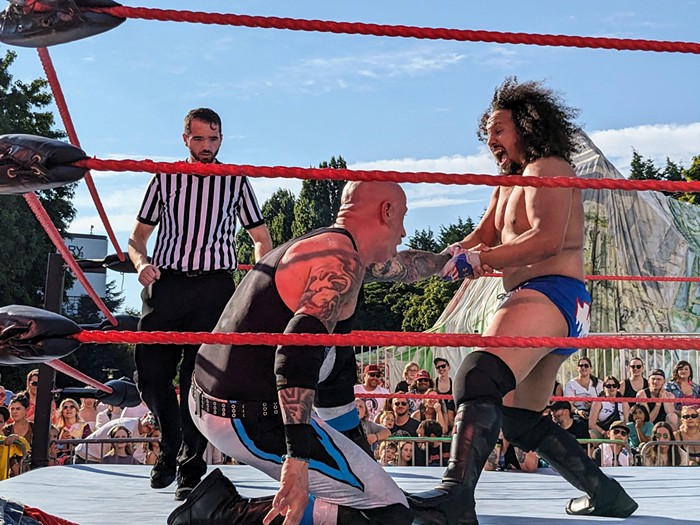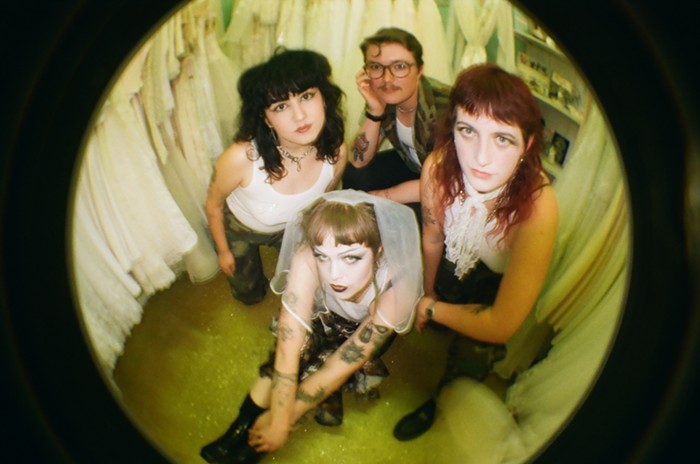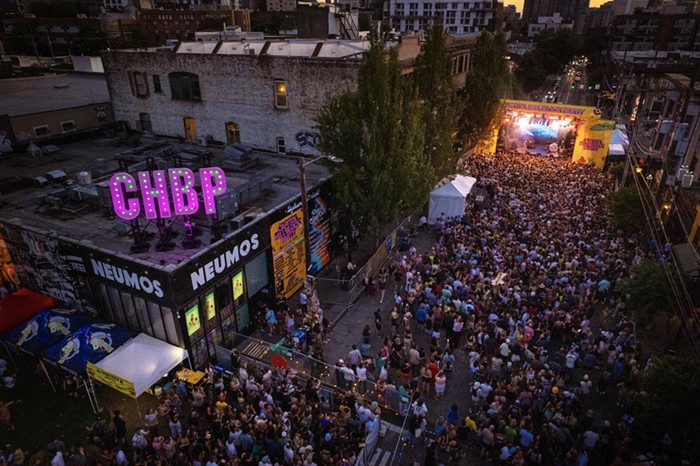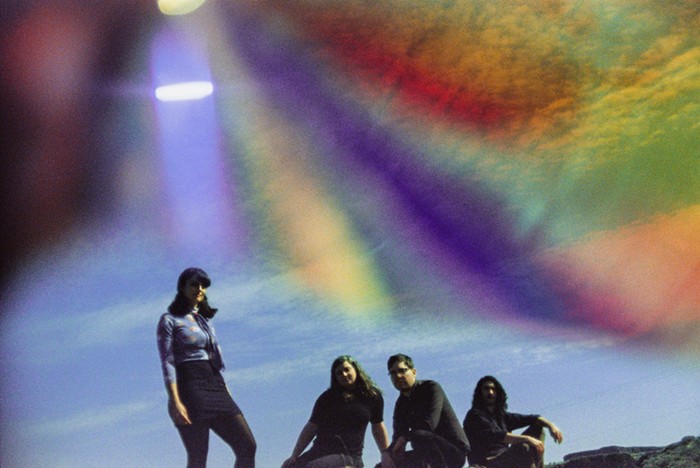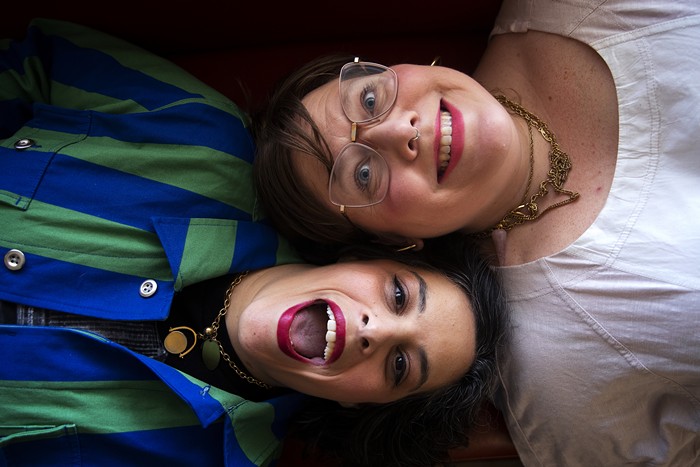
Here's one more reason to seriously consider a move to Tacoma. With over 65 percent support for Proposition 1, a.k.a "Tacoma Creates," it looks like Tacoma will have the first cultural access program in the state of Washington. Thanks to the wisdom of voters, the city will enjoy better access to arts, science, and heritage programs in schools, as well as new arts festivals in town, free tickets to events, and the ample economic benefits that redound to municipalities that have the good sense to broadly invest in the arts. And all of this for the low-low (but still regressive) average price of $13 per household per year.
If any of the above language sounds familiar to you, you're probably also still dealing with the traumatic loss of Access for All, a similar measure that King County voters rejected in the summer of 2017. That proposition, which would have levied a 0.1 percent sales tax to raise $70 million annually for arts (and science! and heritage!) access, lost here by a little less than two points, much to my enduring chagrin. So, what could arts proponents in King County who want to see another cultural access program on the ballot learn from Tacoma? Like all answers to questions of arts administration and governance, the answer is both incredibly simple and stupidly complicated.
After glancing at the precinct-level votes, it looks like none of Tacoma's diverse neighborhoods voted against the measure. People liked it. Even though some claimed the "timing was bad"—Tacoma, like everywhere else in the PNW, is also in the midst of a homelessness crisis and an affordable housing deficit—they voted to raise taxes by a little bit in order to pay for greater access to the arts. It's as if Tacoma understands that expanding arts programs isn't a drain on resources but rather, a smart move that might actually help solve those larger issues while also enriching the lives of children so they don't grow up to be idiot robots. Imagine!
David Fischer, co-chair of the Tacoma Creates campaign, says their path to victory included "listening to neighbors" about what they wanted out of arts programs and building a coalition with organizations outside the arts—schools, parks, philanthropy etc. As a result of that grassroots process, they developed a measure that drives 52 percent of the money into the neighborhoods for "programs for youth, neighborhood events, and community activities." Another 26 percent of the money goes to reducing ticket prices and other similar measures that make it easier for low-income people to get in the door. The remaining funds pay for transportation to cultural spaces, administrative costs, and technical assistance aimed at expanding diversity within the nonprofit sector itself.
Rather than distributing the money to institutions based on their size, as state law required Access for All to do, Tacoma Creates uses an application process. All qualifying nonprofits can apply for project grants that address one of the three service areas—after-school programs, neighborhood enrichment, or access—or they can apply for a general operating grant and receive up to 15 percent of their annual operating budget. But if they opt for that operating budget money, the org has to work in all three of those service areas. Organizations who take the grants must report their results to an independent board appointed by the city council, who oversees the whole thing. "We thought that was a fair and open process that lets each agency pick how they want to maneuver," Fischer said.
The only real opposition they faced, Fischer said, was the generic anti-tax argument. In response to that tired ass line, representatives for Tacoma Creates argued that the investment was smart and necessary. The cultural sector in Tacoma generates nearly $140 million "in total economic activity" per year. Giving that sector a boost would support jobs and save businesses in the short run, and help meet educational outcomes in the long run. Moreover, the community thinks a healthy concentration of arts organizations is "part of Tacoma's success structure, part of the city's brand" said Fischer, and they want to keep it that way. Organizers also pointed to the fact that the state of Washington ranks 46th in the U.S. in terms of arts investment per capita, which suggests there's plenty of room for improvement to spur a sector that produces measurable results.
There are several key differences between Tacoma's plan and the failed Access for All plan that are worth noting. Tacoma Creates is a municipal ordinance, while Access for All had to pass countywide. Access for All actually passed in the city of Seattle—the problem was out in the rest of the county, who felt like too much money (70 percent) was going to larger cultural organizations based in Seattle and not to smaller ones in the rest of King County. The proposition also faced pushback from members of social justice communities, who felt that the measure was perpetuating longstanding racial inequalities by not giving more money to smaller orgs, which are run by a larger percentage of people of color.
There is also the problem of the law itself. The state statute that allowed for the creation of cultural access programs specifically prescribes the way counties with populations over 1.5 million people (i.e. King County) can distribute the money raised by the sales tax. Unlike Tacoma Creates, King County couldn't really alter the 70/30 funding distribution model that privileges larger orgs—all they could do was try to figure out a way to make those large orgs spend their money more progressively. That legislation also provided that cities could do their own thing after three years if cultural access programs weren't passing on a county level, which is what made Tacoma's proposition possible.
All that said, Manuel R. Cawaling, the new executive director of Cultural Access Washington—the group that created and proposed Access for All—cheers on Tacoma's success and says there's plenty to learn from it if his group wants to try for another ballot measure at some point in the near-ish future.
Over the phone, Cawaling said he was inspired by Tacoma's ability to "build a really strong coalition, and build a program that was focused on the impact of the work." Locally, he pointed to 4Culture's ongoing "cultural health study," which just kicked off in late October. They're having "listening sessions" with 39 municipalities in King County to figure out what each city would want from a cultural access program. "We want to hear what the results of that are. That should be the basis of the programs we're trying to create," Cawaling said, adding that "the real opportunities for success will come from the ideas and imaginations of the people who opposed [Access for All]."
Cawaling describes the state statute requiring the arguably unfair distribution as "problematic" to CAWA's goals, but he's "looking into what options we may have to create a better framework to change that." It seems like they could either ask the legislature to amend the legislation to allow for different kinds of funding models, or they could push for a whole new bill. That first thing sounds relatively easy, that latter effort could take years, and right now it's unclear whether lawmakers have any appetite to address the issue.
For now, the group plans to increase lobbying efforts in Olympia and King County. "We want to be more present in the chambers across the region so that, when we're ready to act, we’re not trying to warm up our engine, but we're already revved," Cawaling said. "We feel like the cultural sector has innovative solutions to a lot of problems, and we need to be more involved.”


